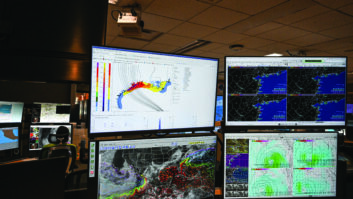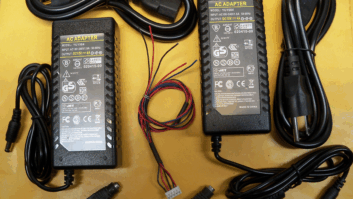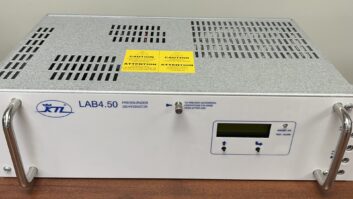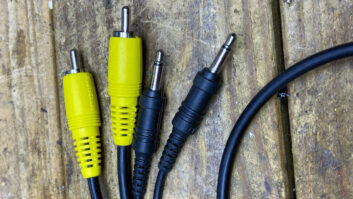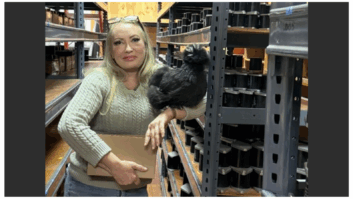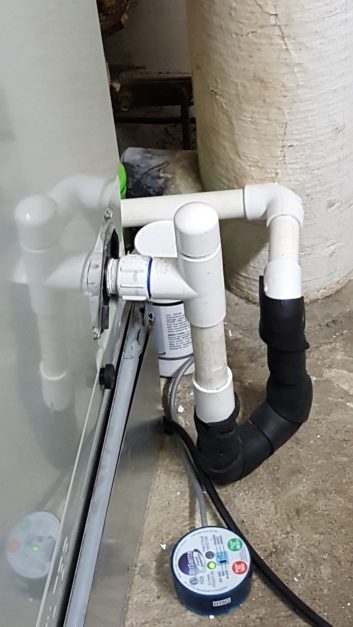
San Diego engineer Marc Mann offers some great tips to augment our suggestions in the Oct. 14 issue for keeping your condensate A/C systems clear for drainage.
First, Marc noted that the photo depicted in that column (Fig. 1) showed the condensate drain hard-piped.
Unfortunately, this is more the rule than the exception. It appears that the cleanout cap was not screwed on but secured using PVC cement.
Changing the tubing and cap to a threaded type will permit direct access to the drain for cleaning with a bottlebrush and/or compressed air.
The photo also shows a water-detecting puck on the floor. This is great; but if water overflows the evaporator pan, it’s too late.
Consider installing an evaporator pan overflow pipe switch that fits into the condensate line; it will turn off the A/C if water rises in the drain tube due to a clog. An example is the Rectorseal Safe-T-Switch available on Amazon.
Marc also likes to add an easy visual method to check if the condensate is indeed flowing.
As shown below, he adds a vinyl tube (with inside diameter of 1 inch) to the drain. PVC nipples placed on either end are held in place using hose clamps.
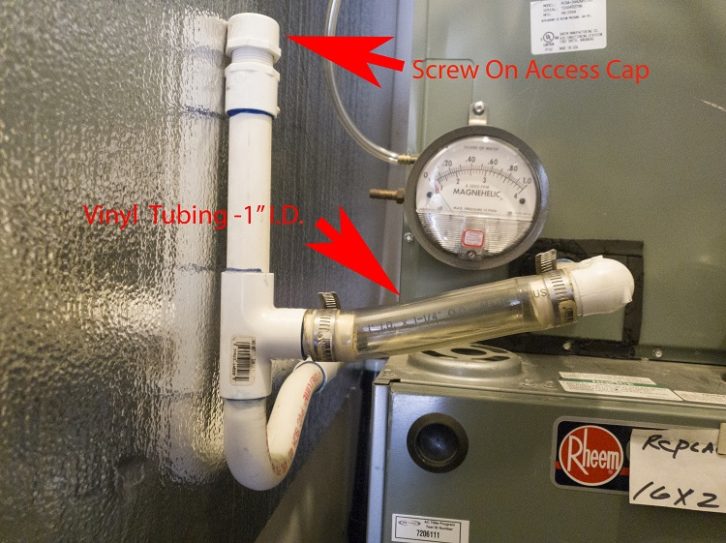
On even moderately humid days, you can verify that the condensate water is flowing and leaving the pan to wherever it is discharged. It takes but a few moments to confirm flow. The clear tubing also lets you see when dirt, algae or scum begins to form so you can use a bottlebrush to clean out the drain.
These low-cost methods can help you reduce the chances of a wet encounter of the worst kind.
Budget processor
Inovonics founder and industry innovator Jim Wood is active on a couple of Part 15 experimenter groups online.
“Being an admittedly elderly fellow, I got my start in radio when AM was just about the only game around,” he told us. “In my home town of San Jose, the only FM station of license there was doing elevator music — Muzak or some similar service. Anyway, I’ve always had a soft spot for AM radio, ‘the radio’ I grew up with.”
As a service to wannabe broadcasters, Jim developed a budget audio processor intended for Part 15 and LPAM applications. This was a “labor of love” project in his semi-retirement, and he has sold about 80 over the past few years. The Schlockwood 200 mono processor has XLR or TRS 1/4-inch phone plug ins and outs. It can be used as a ham radio voice processor!
You can view it at his site www.schlockwood.com.
Jim said his second product in the AM arena is under development with promising early results. It’s an AM mod-monitor, again for the experimental broadcast crowd. Jim doubts this will have the appeal of the processor but it’s a fun project.
Radio World honored Jim as an industry innovator in 2017. It’s encouraging to see his innovative spirit continues!
Unwanted connection
Speaking of building things, San Francisco’s Bill Ruck read our column this summer describing a DIY cable tester by Buc Fitch.
Bill recalls that in his youth he’d mooch mic cables from friends and associates for events he engineered. He quickly learned to test those cables before using them, because the event was not the time to troubleshoot faulty cables.
Later, when Bill had more money, he started buying Belden 8412 and making his own. Bill continued to check them but got tired of fumbling with a VOM. So in desperation he cobbled an XLR tester, similar to the one described by Buc Fitch.
Bill included what he found to be an important feature: He tested the connector shells for connection to any of the pins. He learned from experience never to connect the XLR shell to Pin 1, to avoid ground loops.
In practice, you can’t do this with a Cannon XLR connector, but the Switchcraft A3M and A3F have a convenient place to do this.
Over the years, Bill writes that he has found all sorts of miswired configurations as well as unbelievably bad workmanship hidden inside that XLR shell.
Remember your boots
We’ll wrap up this column with a postscript from David Morgan, director of engineering for Sinclair TeleCable–Norfolk whose tips for generator maintenance we shared recently.
From a webinar I did for the SBE on generator maintenance, David adds that the little rubber boot on the positive battery terminal not only guards against corrosion but also prevents accidental shorting of the battery terminals.
How can this happen? Very easily, when you are working with metal tools like wrenches in close proximity to the terminal.
Is your rubber boot missing? You can find replacements at most auto supply stores.
As we enjoy the winter weather in the Northern Hemisphere, it’s also important to check that your block heater is working. As a part of his preventive maintenance, David checks the temperature. Block heaters can and do go bad, and he has replaced one himself.
Battery age is another point to consider. After getting burned a few years ago by trying to squeeze a little more useful life out of an older battery, David now makes it a rule to replace his generator batteries after three years.
The specific gravity of the individual battery cells can be a good guide to replacement. Hydrometers for measuring this can be found on Amazon for less than $15.
David also plans to add hardware cloth to keep mice out after several set up house inside his big 180 kW Kohler. He has also seen mouse pieces in the metal fan guard grating as well as other places inside the genset. That block heater is an excellent welcome sign!
Workbench submissions are encouraged and qualify for SBE recertification. Email [email protected].



